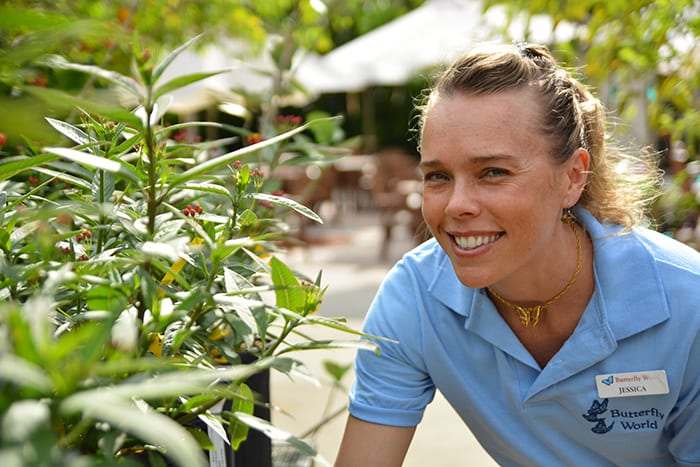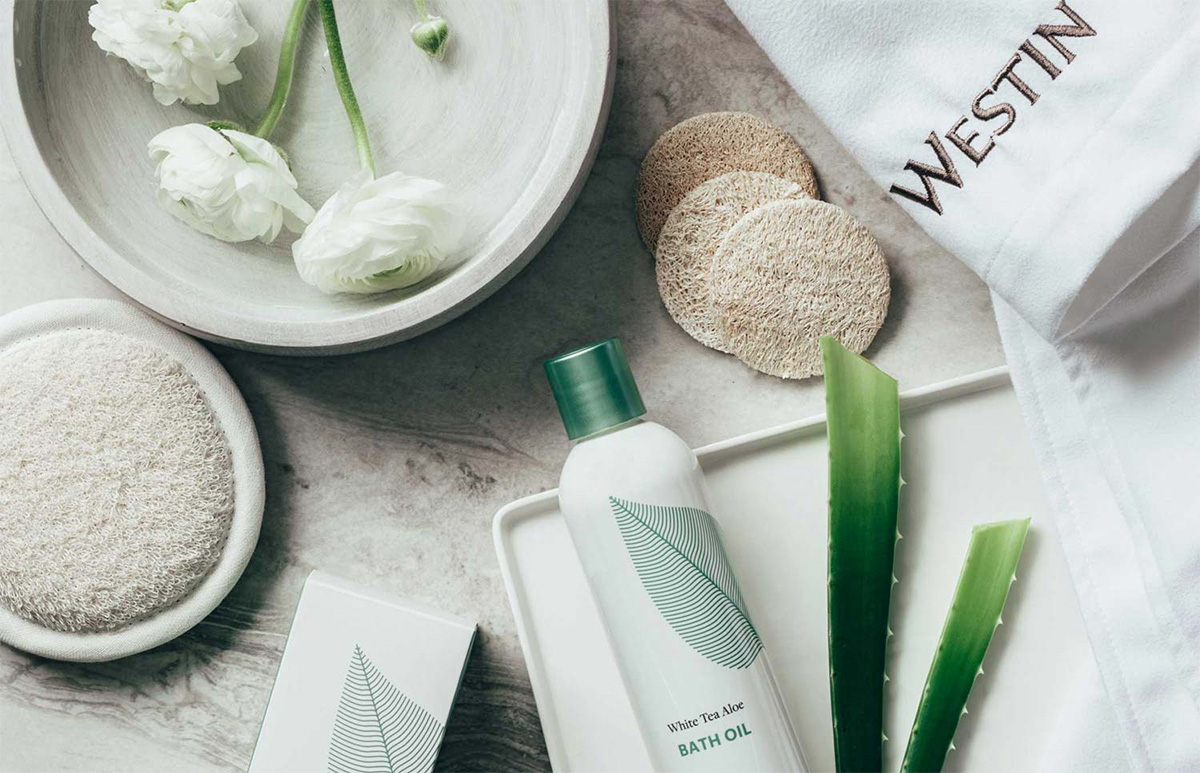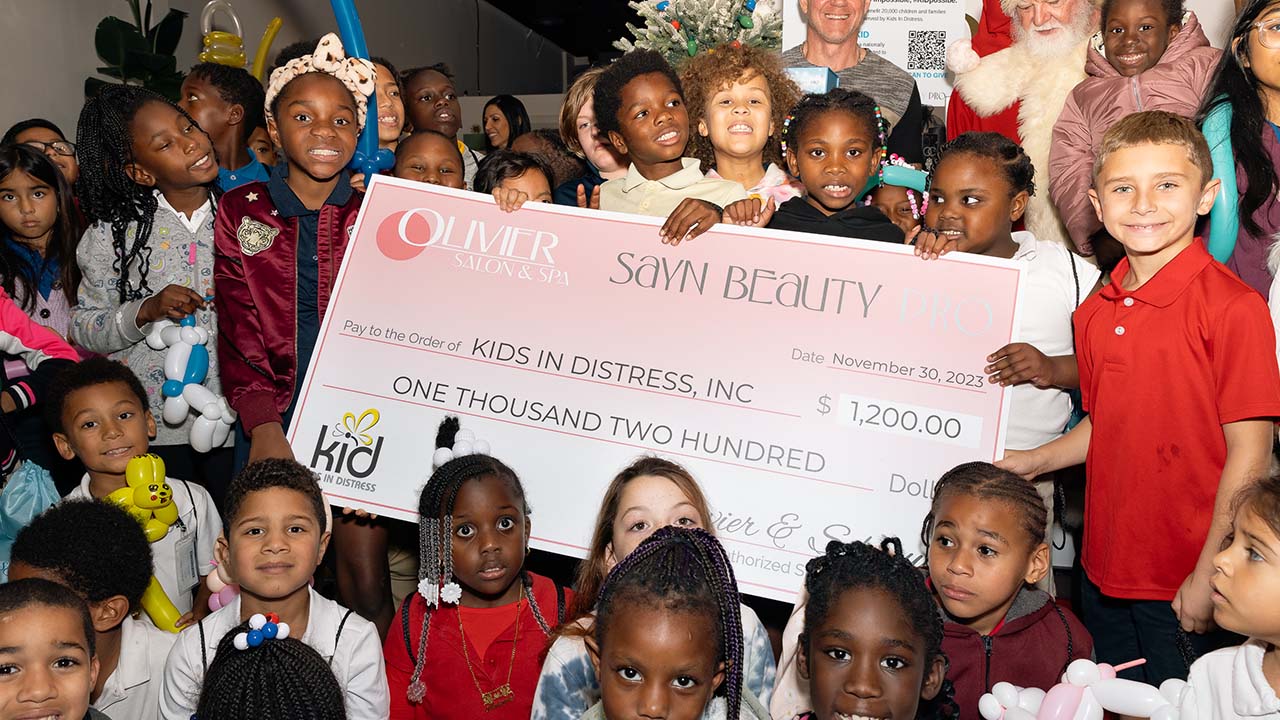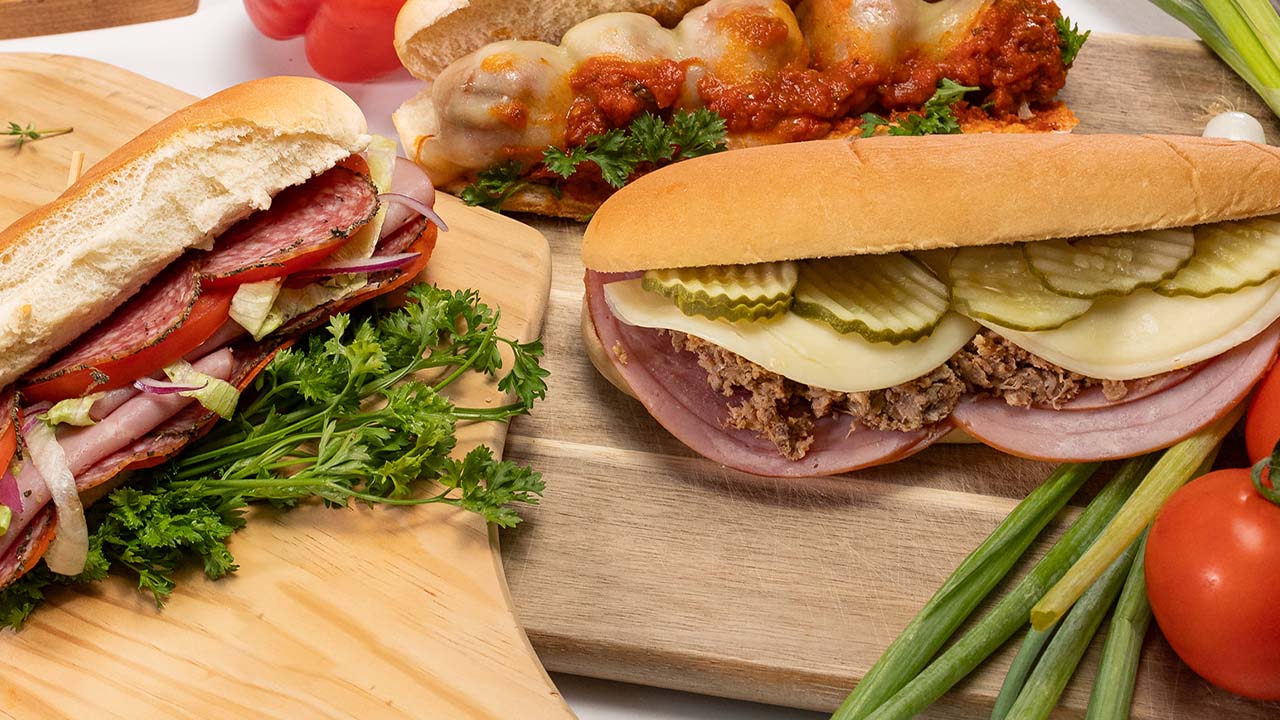Beyond merely being the Butterfly Capital of the World, Coconut Creek is also home to Butterfly World, with its two acres and 10,000 butterflies. It’s expansive, neat and overwhelming all at the same time.
But what if you wanted to recreate your own world of butterflies in your backyard? We spoke with Butterfly World’s Jessica McAtee, who teaches a class on creating butterfly gardens every month, to get three tips on how to build them.
3 Tips to start your ownbutterfly garden
No.1: Know your bugs
“The main thing you need to know, anywhere you’re gardening, is about the local butterflies in your area,” McAtee says. “You need to know specifically what kind of bugs you’re trying to attract, by name, and then you have to complete that equation with what one plant they lay their eggs on.”
Each butterfly has a specific plant (there about 60 species of plants in Florida) that attracts its caterpillars.
“That’s where most people miss butterfly gardening,” she adds. “There’s this disconnect where people want to put flowers in their yard.”
And with good reason. Adult butterflies feed off flowers, but the goal in creating your own garden isn’t to attract the big guys, it’s in making the big guys.
“Some [butterflies] as far as we know only have one plant. And it might seriously be this ugly, scrappy, weedy plant, so if you want that butterfly, you have to have that plant,” she says.
You can visit butterflyworld.com for an exhaustive list of the necessary plants for each butterfly.
No. 2: Don’t Freak Out
“People call here all the time like ‘there’s spiders in my garden!’ or ‘there’s birds!’ McAtee says. “And I kindly remind them we didn’t invent this process — I usually actually sing the “Lion King” song. It’s the circle of life. This is what happens.”
In the wild just one out of every 100 butterfly eggs makes it out, according to McAtee, and animals — like birds, lizards and dragonflies — eating the plant and sometimes the caterpillars is necessary.
No. 3: Sit back and enjoy
Most butterflies only live a couple of weeks and the entire process from the laying of an egg to the emerging of butterflies takes just three weeks.
McAtee has her own garden at home with about 40 different species of plants and she doesn’t just consider it a frivolous and fun activity, it’s something that has shaped her perspective on life, something she recommends everyone at least try.
“There’s just nothing harried about watching nature take its time and build something,” she says. “It teaches you to just be patient and calm, in all walks of life.”
Now that you know the basics, here’s what you need to know about what to include in your garden.
• Plant larval foods. Many caterpillars, which metamorphose into butterflies, require specific host plants for food. By selecting particular plant species, you can provide the basic habitat requirements for specific butterflies that you’d like to see in your garden. Since highly preferred hosts may be unattractive or eaten until they have few leaves, plan to put these plants in an out-of-the-way place.
• Plant nectar sources for adults. Butterflies are attracted by sweet-, pungent- and acrid-smelling flowers that are blue, orange, yellow, pink, purple and red. Plants with deep throated, drooping or enclosed flowers are unsuitable for nectar-gathering.
• Avoid pesticide use! Especially avoid any broad-spectrum insecticides that can harm butterflies and their larvae.
Below is a chart of common butterflies found in South Florida and what host/nectar plants you can cultivate to attract them.















